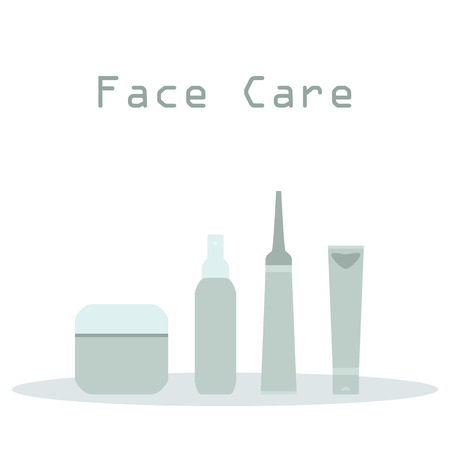1. Understanding Medical Aesthetics in India
Medical aesthetics has gained significant popularity across India, blending advanced technology with the country’s unique beauty ideals and skin health needs. In the Indian context, medical aesthetics encompasses a range of minimally invasive and non-invasive procedures designed to enhance skin appearance, treat pigmentation, reduce acne scars, and achieve a radiant complexion. Popular treatments include chemical peels, laser therapies for pigmentation and hair reduction, hydrafacials, microneedling, PRP (Platelet Rich Plasma) therapy, and botulinum toxin injections. The diverse Indian climate—ranging from humid coastal areas to dry northern plains—has a direct impact on skin health. High humidity can lead to increased oil production and breakouts, while dry climates may cause dullness and sensitivity. Additionally, urban pollution and strong sunlight intensify concerns like tanning, uneven skin tone, and premature aging. Indian lifestyles often involve hectic schedules and irregular sleep patterns, which further influence skin vitality. Understanding these local factors is essential for tailoring medical aesthetic treatments that deliver optimal results while maintaining overall skin health.
Importance of Professional Consultation
In the Indian context, seeking expert advice from certified dermatologists or aesthetic doctors before undergoing any medical aesthetics procedure is not just a formality—it is essential for your safety and optimal results. The diverse skin types and climatic conditions across India—from humid coastal cities like Chennai and Mumbai to the dry regions of Rajasthan—demand a personalised approach in skincare treatments. Consulting with a qualified professional ensures that your unique skin concerns are addressed, and that treatments are tailored to suit the local environment as well as individual factors such as genetics, lifestyle, and common Indian skin conditions like pigmentation, acne scars, or melasma.
Why Choose Certified Experts?
India has seen a surge in the popularity of aesthetic procedures, making it crucial to distinguish between certified experts and untrained practitioners. Certified dermatologists and aesthetic doctors possess formal qualifications, up-to-date training, and an understanding of both international protocols and Indian-specific needs. They are also familiar with regulatory standards set by the Medical Council of India (MCI) and can recommend only safe, approved products suitable for Indian skin tones.
Key Benefits of Professional Consultation
| Benefit | Description | Indian Context Example |
|---|---|---|
| Accurate Skin Assessment | Detailed evaluation based on Indian skin types (Fitzpatrick III-VI) | Identifying predisposition to hyperpigmentation common among Indian patients |
| Personalised Treatment Plan | Treatments tailored for local climate, pollution levels, and lifestyle | Customising care for Delhis high pollution or Keralas humidity |
| Minimised Risks & Complications | Professionals follow strict hygiene protocols & use FDA-approved products | Avoiding common side effects like post-inflammatory hyperpigmentation in darker skin tones |
| Cultural Sensitivity & Communication | Understanding cultural beauty ideals and comfort levels with procedures | Respecting preferences for subtle enhancements over dramatic changes |
| Long-Term Follow-Up Care | Continuous monitoring ensures lasting results & timely management of side effects | Scheduling regular check-ins during festival seasons when sun exposure may increase |
Conclusion: Your Safety First
Ultimately, choosing a certified dermatologist or aesthetic doctor in India is your first step towards achieving glowing, healthy skin while safeguarding against unwanted complications. It helps you make informed decisions about treatments—whether its chemical peels, laser therapies, or injectables—ensuring the methods used are both effective and appropriate for your individual needs within the Indian setting.

3. Pre-Care Essentials for Indian Skin
Preparing your skin before a medical aesthetic procedure is crucial, especially considering the diverse Indian skin types and the unique environmental challenges present across India. Following specific pre-care steps can help minimize risks and optimize results.
Understand Your Skin Type
Indian skin often ranges from oily to combination and is prone to pigmentation and sensitivity due to higher melanin content. It’s essential to consult a dermatologist who understands the nuances of Indian skin. A proper assessment will guide you in choosing suitable treatments and avoiding adverse reactions.
Sun Protection Is Non-Negotiable
The harsh Indian sun can aggravate existing skin issues and increase sensitivity before procedures. Begin using a broad-spectrum sunscreen with SPF 30 or higher at least two weeks prior. Reapply every 3–4 hours, especially if you commute or work outdoors.
Optimise Diet & Hydration
A balanced diet rich in antioxidants—think seasonal fruits like mangoes, papaya, and guava—helps combat oxidative stress. Traditional Indian diets are often high in spices; while beneficial, spicy foods can sometimes trigger inflammation or flare-ups. Drinking plenty of water and herbal teas like tulsi or ginger chai supports skin hydration from within.
Avoid Harsh Skincare Products
In the days leading up to your procedure, stop using strong actives such as retinol, AHAs, or harsh scrubs that can irritate Indian skin. Instead, opt for gentle cleansers and moisturisers suitable for your skin type.
Cultural Habits: Home Remedies & Cleansing Rituals
Many Indians follow traditional skincare rituals involving natural ingredients like turmeric, sandalwood, or besan (gram flour). Discontinue these at least 5–7 days before your treatment, as they might cause unpredictable reactions when combined with medical-grade products.
Consult on Current Medications & Supplements
Inform your doctor about any Ayurvedic medicines or herbal supplements you’re taking. Some herbs common in India—like neem or ashwagandha—may affect healing or interact with anaesthetics used during procedures.
Prepare Emotionally & Practically
Discuss realistic expectations with your practitioner and plan for downtime post-procedure. Arrange for transportation if needed, especially in crowded urban centres where pollution may impact sensitive post-procedure skin.
4. Post-Care Best Practices for Lasting Glow
After any medical aesthetic procedure, the right post-care regimen is crucial—especially in India, where the climate, pollution, and cultural practices uniquely impact skin health. Here are expert-endorsed aftercare routines tailored specifically for Indian skin to help you maintain a lasting glow and avoid common pitfalls.
Protecting Against Pollution
Urban pollution is a major concern in Indian metros like Mumbai and Delhi. Fine particles can trigger irritation and dullness post-treatment. To combat this:
- Gentle Cleansing: Use a mild, soap-free cleanser twice daily to remove particulate matter without stripping natural oils.
- Barrier Creams: Look for non-comedogenic creams with niacinamide or ceramides to fortify your skin’s barrier.
- Antioxidant Serums: Vitamin C or green tea extract serums help neutralise free radicals caused by pollution exposure.
Sun Care: Essential in the Indian Climate
India’s strong UV index makes sun protection non-negotiable, especially after aesthetic procedures. Follow these steps:
| Sunscreen Type | SPF Level | Reapplication Frequency |
|---|---|---|
| Chemical Sunscreen | SPF 30-50 | Every 2 hours outdoors |
| Mineral Sunscreen (Zinc/Titanium) | SPF 30+ | Every 3 hours; ideal for sensitive skin |
| Tinted Sunscreen | SPF 50+ | Every 2-3 hours; helps prevent hyperpigmentation common in Indian skin tones |
- Avoid Peak Hours: Limit sun exposure between 11 am and 3 pm.
- Cultural Accessories: Use dupattas, scarves, or wide-brimmed hats as an added layer of sun protection—a time-honoured Indian practice that remains effective today.
Incorporating Traditional Remedies Safely
The use of ayurvedic and home remedies is deeply rooted in Indian culture. While some traditional ingredients offer real benefits, always consult your dermatologist before introducing them post-procedure to avoid reactions. Safe options include:
| Traditional Ingredient | Benefit for Post-Care |
|---|---|
| Aloe Vera Gel | Cools, soothes redness and supports healing. |
| Sandalwood Paste (Chandan) | Mild anti-inflammatory properties; may calm irritation when used sparingly. |
| Cucumber Juice | Hydrates and refreshes skin after treatments. |
| Coconut Oil* | Mild moisturiser; suitable only if not acne-prone. |
*Always patch-test coconut oil first, as it may clog pores in oily skin types commonly seen in India.
General Aftercare Tips for Indian Skin Types
- Avoid spicy or heat-inducing foods immediately after treatment to minimise flushing.
- No vigorous yoga, gymming, or saunas for at least 48 hours post-procedure.
- Avoid harsh scrubs or exfoliants until cleared by your practitioner.
Key Takeaway:
Diligent aftercare—combining modern science with safe traditional practices—ensures your aesthetic results last longer and your skin remains radiant despite India’s challenging environment. Always follow your doctor’s personalised instructions for optimal healing and glow.
5. Common Myths and Misconceptions
When it comes to medical aesthetics in India, several myths and misconceptions continue to circulate, often discouraging individuals from seeking safe and effective treatments. It is essential to separate fact from fiction so that everyone can make empowered decisions about their skin health and appearance.
Myth 1: Aesthetic Treatments Are Only for Celebrities or the Elite
Many Indians believe that procedures such as chemical peels, laser treatments, or injectables are exclusively reserved for film stars or wealthy individuals. In reality, advancements in technology and the increasing availability of qualified practitioners have made medical aesthetics accessible to a broader section of society. Clinics across cities like Mumbai, Delhi, Bengaluru, and even tier-2 towns now offer treatments tailored to various budgets and skin types.
Myth 2: These Procedures Are Unsafe or Cause Permanent Damage
The perception that aesthetic treatments are inherently risky is widespread. However, when performed by certified dermatologists or cosmetic physicians using FDA-approved equipment and products, these procedures are both safe and predictable. The key is to choose registered clinics with experienced professionals who follow stringent hygiene protocols—especially important in Indias diverse climate conditions.
Myth 3: Results Are Instant and Permanent
Many people expect immediate transformation after one session. In truth, most medical aesthetic treatments require multiple sittings for optimal results, especially for concerns common among Indian skin types such as hyperpigmentation or acne scars. Moreover, maintenance sessions and proper post-care are necessary to sustain the benefits. Realistic expectations set by your practitioner are vital for satisfaction.
Myth 4: Treatments Are Not Suitable for Indian Skin
Some believe that aesthetic procedures developed in Western countries might not suit Indian skin tones and textures. While it is true that Indian skin has unique sensitivities—such as higher melanin content making it more prone to pigmentation—qualified Indian dermatologists customize techniques and products accordingly. Laser technologies, peels, and fillers have evolved to address these specific needs safely.
Empowering Yourself with Accurate Information
The best way to combat misinformation is by consulting certified experts who understand Indian skin profiles. Ask questions about procedure safety, downtime, likely outcomes, and aftercare requirements before proceeding with any treatment. By debunking prevalent myths and embracing factual knowledge, you can confidently pursue radiant skin while protecting your health.
6. Selecting the Right Clinic and Products
When it comes to medical aesthetics in India, choosing the right clinic and products is crucial for ensuring both safety and optimal results, especially considering the unique characteristics of Indian skin. Here’s a step-by-step guide tailored for Indian readers:
Check for Regulatory Approvals
Always verify that your chosen clinic is registered with national authorities such as the Medical Council of India (MCI) or relevant state bodies. Ask about certifications like NABH (National Accreditation Board for Hospitals & Healthcare Providers), which reflect adherence to quality standards. For skincare products, look for approval from the Central Drugs Standard Control Organisation (CDSCO). Never hesitate to request proof—genuine clinics will gladly provide documentation.
Trust Word-of-Mouth and Local Reviews
In India, word-of-mouth recommendations carry significant weight. Speak to friends, family, or colleagues who have undergone similar treatments. Additionally, check online reviews on platforms like Practo or Justdial to gauge patient satisfaction and the clinic’s reputation within your community.
Consider Indian Skin Sensitivities
Indian skin is prone to pigmentation, tanning, and sensitivity due to climatic factors. Ensure that your clinic employs dermatologists or aesthetic practitioners experienced with diverse Indian skin tones. Ask if they use products formulated for Indian conditions—avoid those containing harsh bleaching agents or steroids not suitable for regular use.
Ask About Aftercare Support
A reputable clinic will offer comprehensive pre- and post-care guidance specific to Indian lifestyles, including advice on sun protection, humidity management, and diet adjustments. This ongoing support is essential for maintaining glowing skin after any medical aesthetic procedure.
By prioritising regulatory approvals, leveraging trusted recommendations, and selecting products suited to Indian skin types, you can enjoy safe and effective medical aesthetic results while embracing local values and care standards.
7. Long-Term Skin Maintenance in the Indian Setting
Maintaining glowing, healthy skin after medical aesthetics treatments requires a thoughtful approach tailored to India’s unique environments and cultural routines. Integrating professional care with everyday skincare habits ensures lasting results, even amidst the country’s diverse climates—from humid coastal regions to dry interiors and bustling urban centres.
Choose the Right Skincare Products
Select gentle cleansers and moisturisers that cater to your specific skin type—whether oily, combination, or sensitive. Opt for non-comedogenic formulations, especially important in humid cities like Mumbai or Chennai. For drier climates such as Rajasthan or Delhi winters, choose hydrating creams with ingredients like hyaluronic acid or glycerin.
Sun Protection is Non-Negotiable
Apply broad-spectrum sunscreen (SPF 30 or higher) daily, regardless of skin tone or weather. Reapply every two hours if outdoors, particularly in regions with high UV exposure. Lightweight, gel-based sunscreens are often preferred in Indian weather due to minimal stickiness.
Integrate Ayurveda and Modern Care
Many Indians benefit from blending traditional remedies—like turmeric masks or aloe vera—with scientifically backed products recommended by dermatologists. However, always consult your doctor before combining home remedies with post-procedure care.
Cultural Considerations: Festivals and Rituals
During festivals like Holi or Diwali, protect your skin from harsh colours and firecrackers by using barrier creams and gentle cleansing post-celebration. Avoid scheduling major aesthetic procedures just before such events to allow proper healing time.
Regular Follow-Ups and Lifestyle Habits
Schedule periodic check-ups with your aesthetic practitioner to monitor progress and adjust treatments as needed. Healthy lifestyle habits—such as a balanced diet rich in fruits and vegetables, adequate hydration (aim for 8-10 glasses of water daily), and managing stress through yoga or meditation—can significantly enhance your long-term results.
Adapt Skincare to Seasonal Changes
Modify your routine according to the season; switch to lighter products during monsoon and summer, while opting for richer moisturisers in winter. Always cleanse twice daily to remove dust and pollutants common in urban Indian environments.
By merging expert medical aesthetics advice with practical, culturally aware skincare practices, individuals across India can enjoy radiant, healthy skin year-round.


